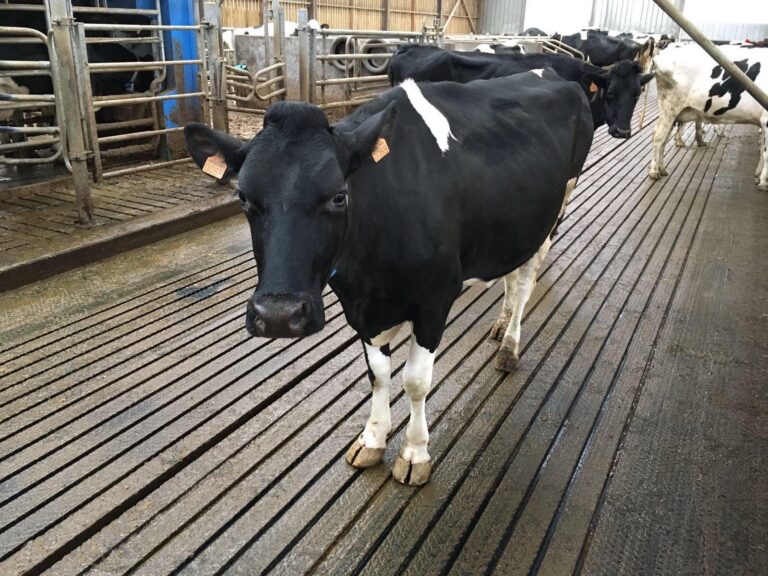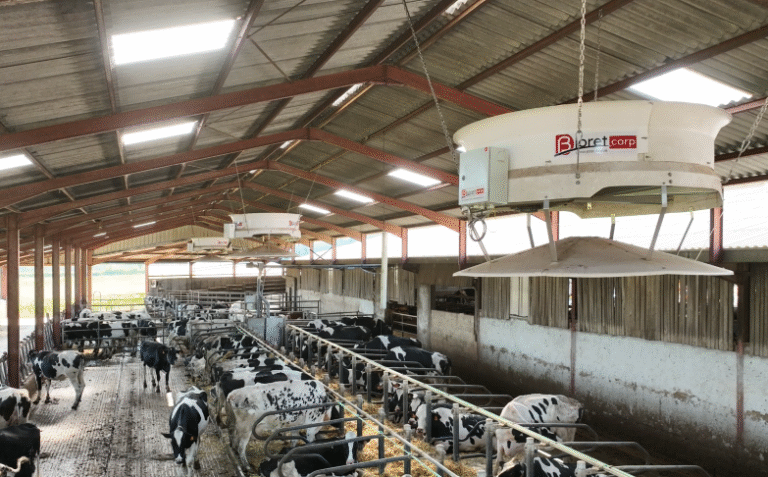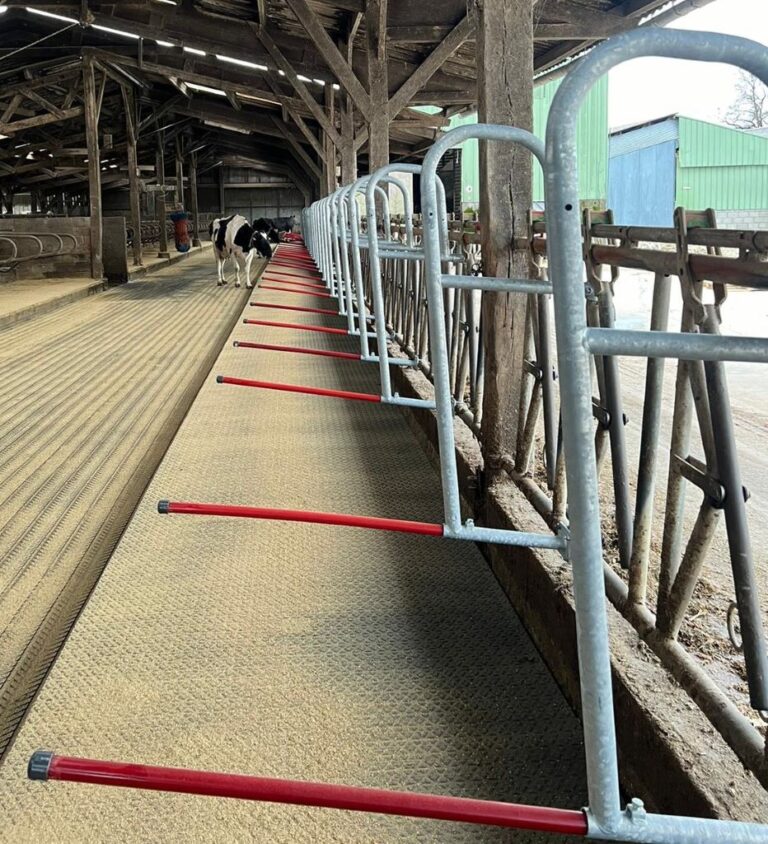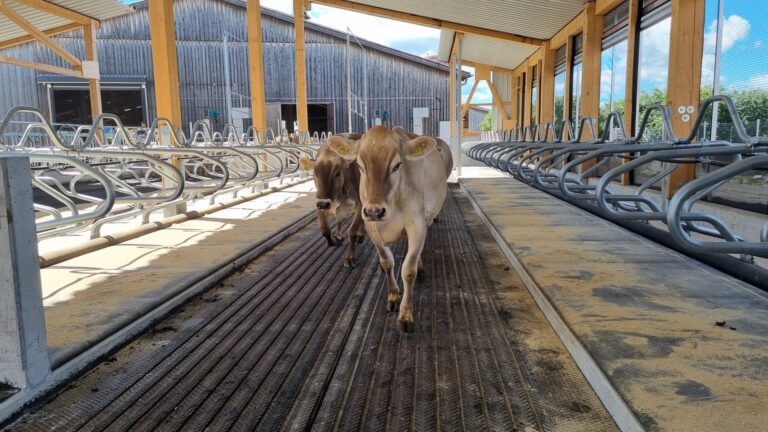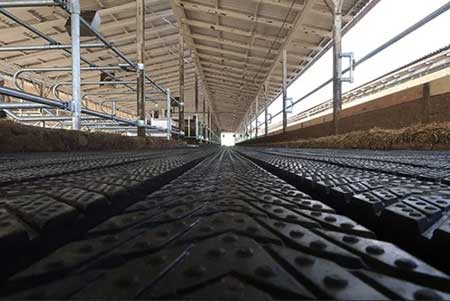From an anatomical perspective, cow hooves are designed to walk on soft ground. However, in most livestock buildings, cows must walk and, more importantly, stand on hard surfaces such as concrete and slatted floors. This leads to altered horn production, a state of chronic inflammation, and difficulties in healing. These surfaces are often too abrasive, causing excessive horn wear, which can result in excessively thin soles that are more susceptible to ulcers and foot disorders. These repetitive traumas can cause foot injuries and joint dysfunctions, leading to lameness. A cow with foot and leg pain will move less to eat and drink, reducing its milk production. Its health and reproduction will also be negatively affected, to the point where lameness increases the risk of premature culling by a factor of five.
Soft flooring provides comfort and extends the longevity of cows.
On the contrary, with a flexible floor, the contact area between the hooves and the floor will be larger. This allows for a better distribution of weight and, on average, 40% less pressure. This flexibility can be achieved by adding rubber mats, such as the Magellan mat.
Professor Mulling of the University of Leipzig demonstrated that with a flexible mat, such as the Magellan, a larger contact area at the hooves allowed for better weight distribution, more bearable joint pressure, and therefore a more stable position for the animal and a lower risk of foot and joint lesions.
To maximize the benefits of rubber mats, prioritize their placement where cows spend long periods standing: in front of the feed bunk, in the waiting area, and in front of the milking parlor or robots. More comfortable flooring is also particularly beneficial for first-calf heifers. Early in lactation, especially during the first lactation, there is a significant mobilization of body reserves to compensate for the energy deficit. The digital cushion, a fatty mass inside the hoof that acts as a shock absorber, will decrease. Postpartum cows, especially first-calf heifers, are already weakened by the onset of lactation. Ensuring their comfort and good foot health is key to a successful start to lactation.
With healthy feet and less joint fatigue, cows will be in optimal health and able to express their full milk production potential.
